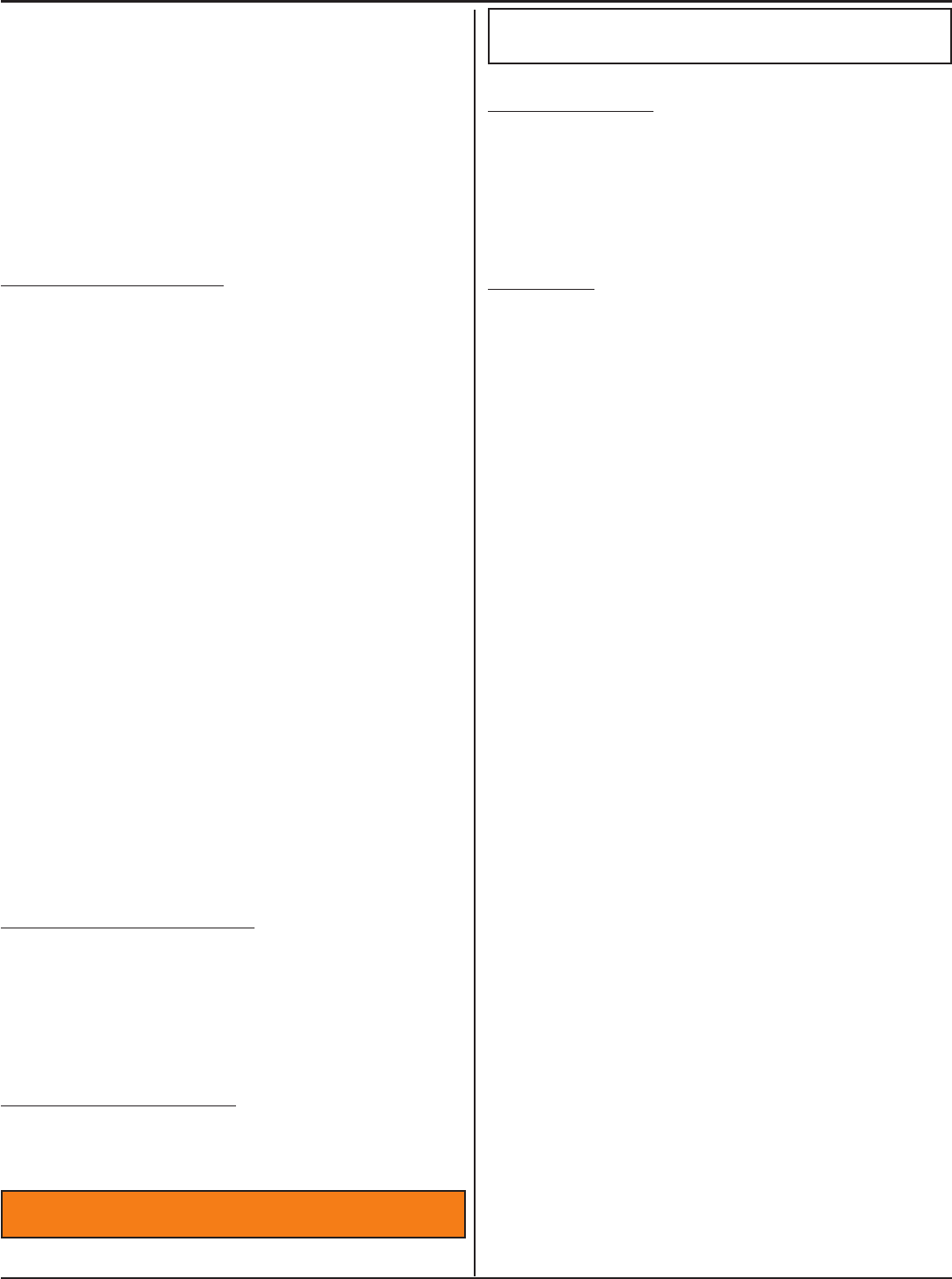Operating Guide

49
The coupler latch lever must be able to rotate freely
and automatically snap into the latched position. Oil
the pivot points, sliding surfaces, and spring ends with
SAE 30W motor oil. Keep the ball pocket and latch
mechanism clean. Dirt or contamination can prevent
proper operation of the latching mechanism.
When replacing a ball, the load rating must match or
exceed the GVWR of the trailer.
9.2.4.2 rIng and pIntle
Before each tow, coat the ring with a thin layer of
automotive bearing grease to reduce wear and ensure
proper operation; and check the locking device that
secures the pintle to the ring for proper operation.
See the pintle manufacturer’s manual for other
inspection and maintenance activities. If you do not
have this manual, contact your dealer for assistance.
If you see or feel evidence of wear, such as at spots,
deformations, pitting or corrosion, on the ring or
pintle, immediately have your dealer inspect them to
determine the proper action to prevent possible failure
of the ring and pintle system. All bent or broken coupler
parts must be replaced before towing the trailer.
The pintle handle lever must be able to rotate freely
and automatically snap into the latched position. Oil
the pivot points, sliding surfaces, and spring ends with
SAE 30W motor oil. Keep the ring pocket and latch
mechanism clean. Dirt or contamination can prevent
proper operation of the latching mechanism.
When replacing a ring, the load rating must match or
exceed the GVWR of the trailer.
9.2.5 landIng leg or jack
If a grease tting is present, use a grease gun to
lubricate the jack mechanism. Grease the gears in the
top of hand-cranked jacks once a year, by removing the
top of the jack and pumping or hand packing grease
into the gears.
9.2.6 lIghtS and SIgnalS
Before each tow, check all trailer lights for proper
operation.
^ WARNING
To avoid risk of collisions, all lights must
work.
9.2.7 wheel rImS
If the trailer has been struck, or impacted, on or near
the wheels, or if the trailer has struck a curb, inspect
the rims for damage. Replace any damaged wheel.
Inspect the wheels for damage every year, even if no
obvious impact has occurred.
9.2.8 tIreS
Before each tow, check the tire pressure to make sure
it is at the level indicated on the tire sidewall or VIN
label. Tire pressure must be checked while the tire
is cold. Do not check tire pressure immediately after
towing the trailer. Allow at least three hours for the tires
to cool, if the trailer has been towed for as much as one
mile. Tires can lose air over a period of time.
Replace the tire before towing the trailer if the tire
treads have less than 2/32 inch depth or the telltale
bands are visible.
A bubble, cut or bulge in a side wall can result in a
tire blowout. Inspect both side walls of each tire for
any bubble, cut or bulge; and replace a damaged tire
before towing the trailer.
If you are storing your trailer for an extended period,
make sure the tires are inated to the maximum rated
pressure indicated on the sidewall or VIN label and that
you store them in a cool, dry place such as a garage.
Use tire covers to protect the tires from the harsh
effects of the sun.
Inspection, Service And Maintenance










